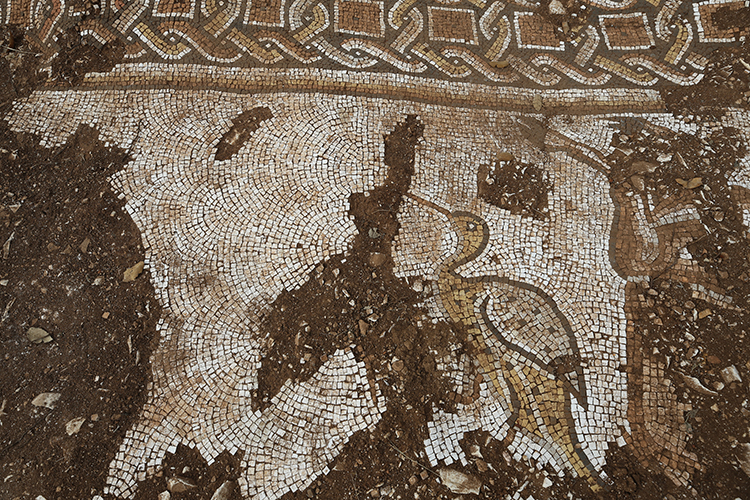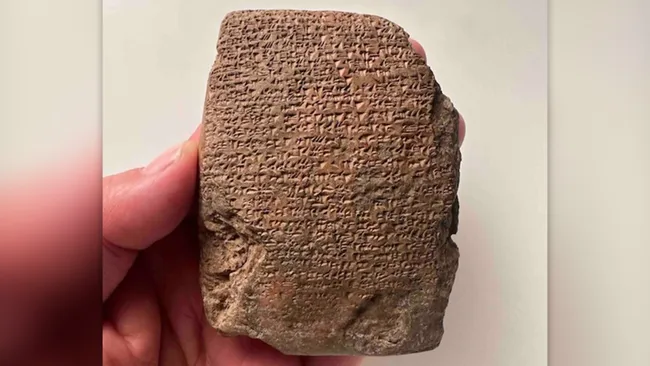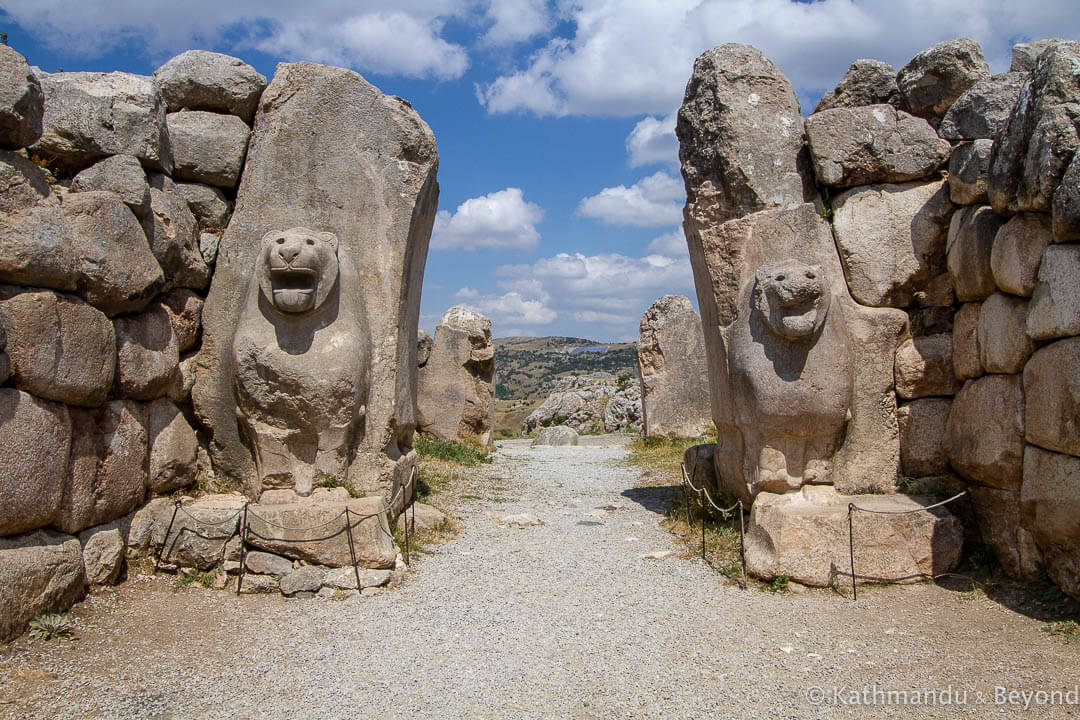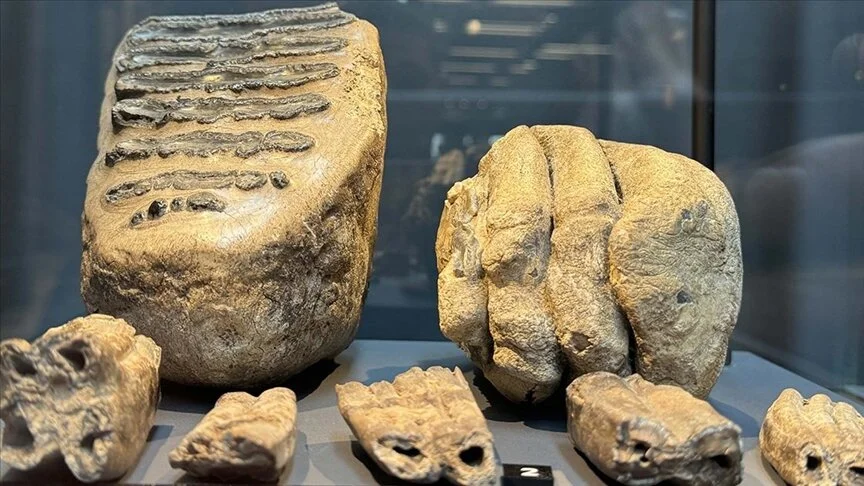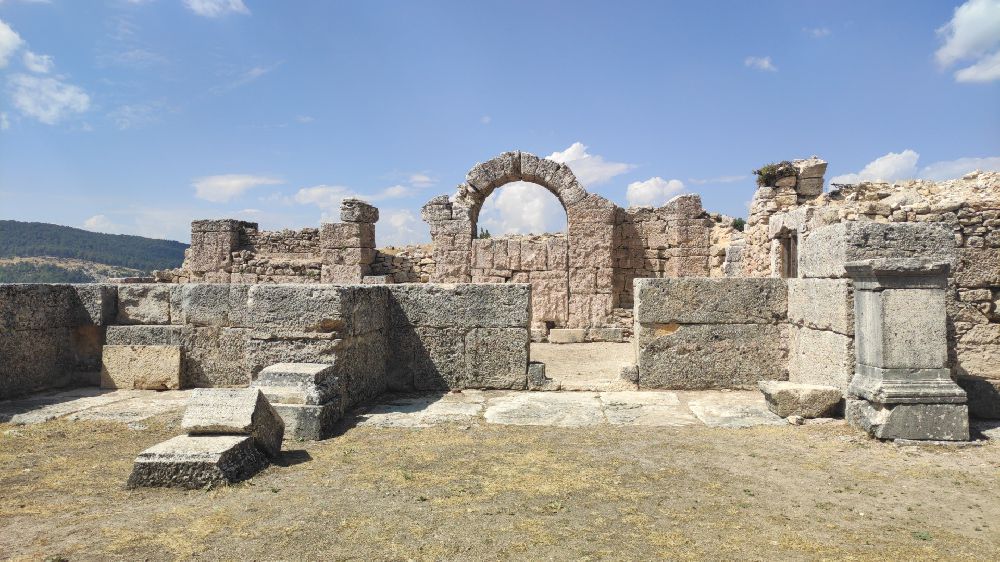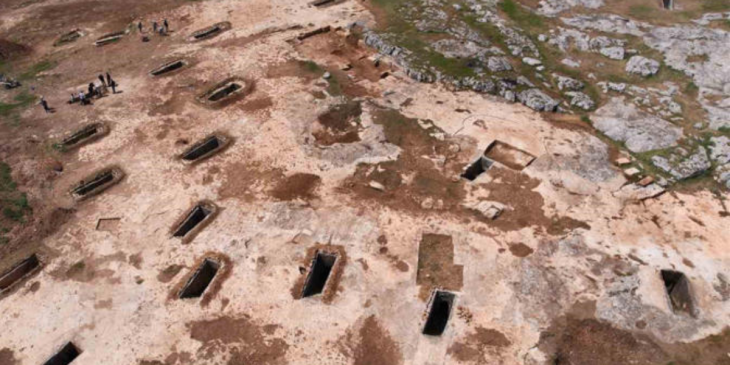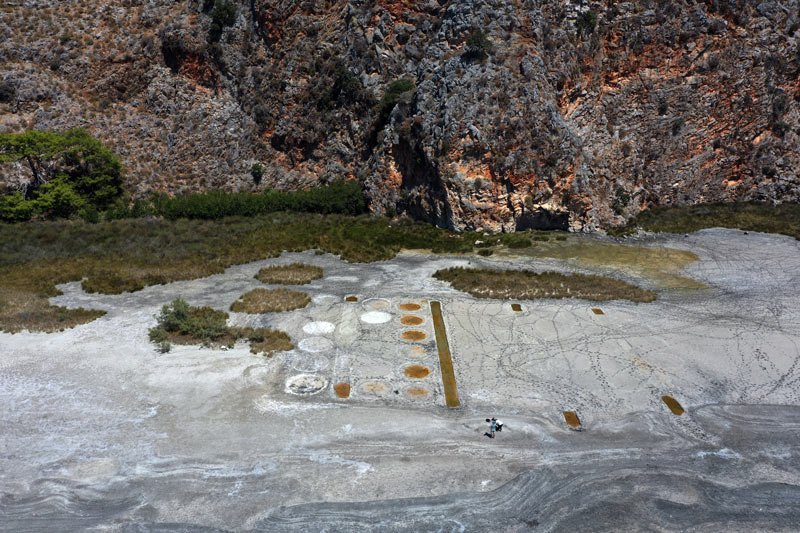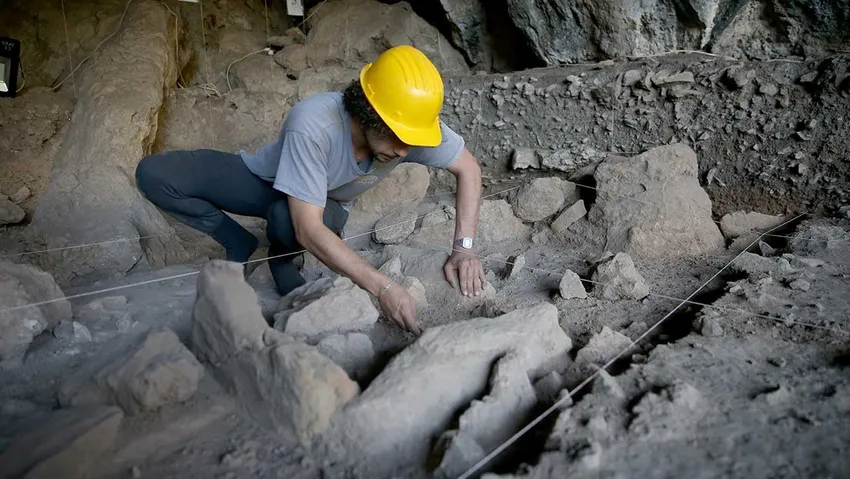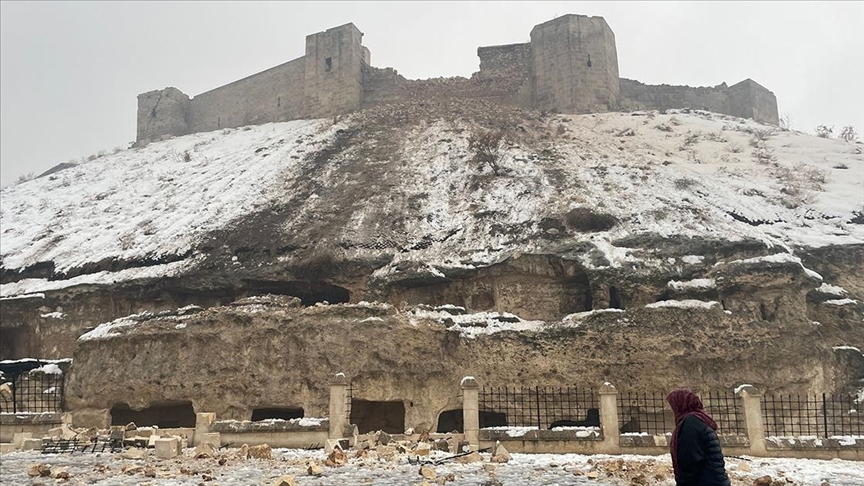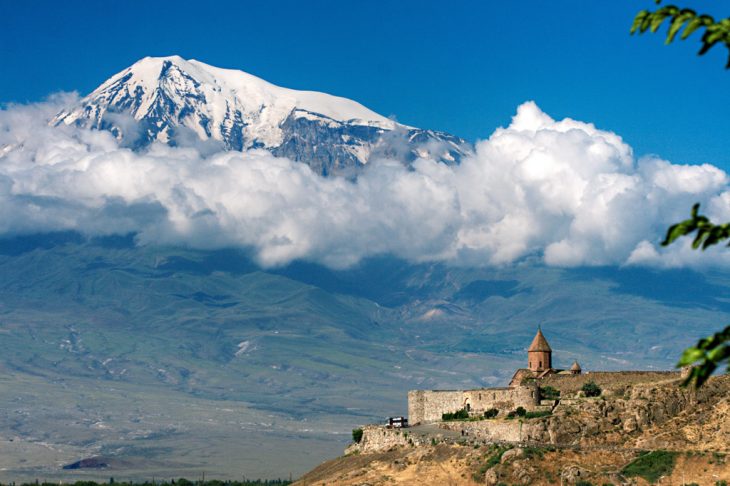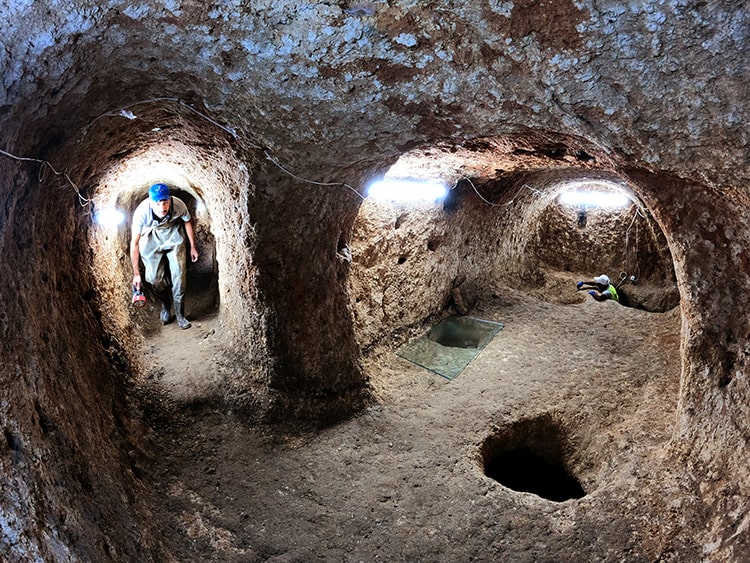In response to a report of illegal excavation at the area known locally as Kela Hanma (Lady Castle), situated in Uzunkaya Village approximately 30 kilometers away from the town center of Mardin, officials initiated a rescue excavation.
During these excavations, Roman-era floor mosaics featuring marine life figures were unearthed at the remains of a villa from the Roman period.
Upon examination of the area, the research team discovered numerous illegal excavation pits, resulting in the severe damage to the architectural structure of the site.
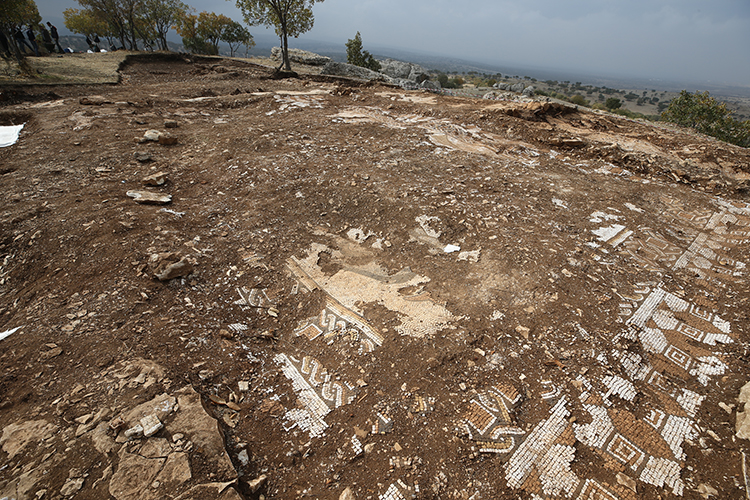
The rescue excavations, led by Mardin Museum Director Abdulgani Tarkan, with the participation of expert archaeologist and art historian Museum Specialist Archaeologist Mehmet Şan, as well as teams from the Diyarbakır Restoration and Conservation Regional Laboratory, have been underway.
These rescue excavations, which commenced on October 2nd, revealed mosaic floor pavements belonging to the architectural structure of a Roman-era villa rustica (country house or farmstead).
The floor mosaics feature various motifs such as fish scales, rows of adjacent triangles, horizontal and vertical hexagons, interconnected octagons, swastika (hooked cross) motifs within squares, a series of interlocking rounded-edge squares forming an arch motif, as well as depictions of trees, waterfowl, octopuses, fish, mussels, seals, eels, and aquatic plants.
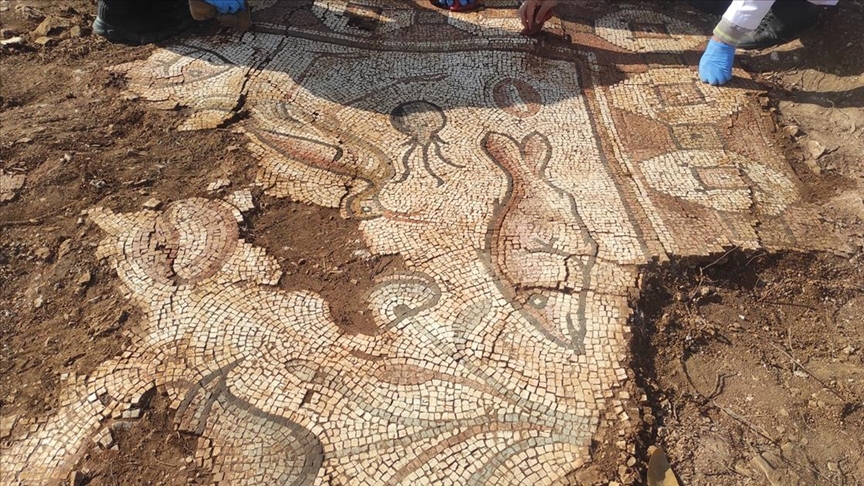
Abdulgani Tarkan, stating they are working on the remains of the villa where the ruling class resided, mentioned, “The area is not just limited to the rural villa. There are different architectural remnants on the southern slope. Alongside living spaces, there is also a necropolis area. It’s a site dated back to the 5th and 7th centuries. Positioned atop a commanding hill in the region, it was used by a family belonging to the ruling class as a rural villa. Surrounding the rural villa, there are small rooms designated for servants and soldiers.”

“Tarkan mentioned that the mosaics resemble those they’ve seen in the region before. However, what sets these mosaics apart is the inclusion of marine life alongside animal figures, a first for this region. For the first time in a rescue excavation in the Mardin area, we’ve encountered depictions of marine creatures including octopuses, various fish species, and seabirds. To prevent further damage, the mosaics will be removed. Our goal is to exhibit these mosaics in the museum.”
Photo Credit: Halil İbrahim Sincar/AA

